In November, Eric Meadows posted an article analyzing the Drytron archetype and how it works. It's a very comprehensive guide and a must-read for anyone who wants to learn how to pick up the deck.
But this article isn't a deck analysis so much as a history lesson. To explain what I mean, let me explain how I felt when I learned about Drytron's rise to prominence in the December 2020 meta.
It went a little something like this.
"Oh, so Drytron's showing up in tournaments now? That's kinda neat. But it's probably just a rogue deck like Megaliths. It'll get phased out by the tier 1 decks, especially when they ban their common engine."
"...Oh, it is a tier 1 deck? It doesn't have a common engine? Whoa okay, that's sick. What's its end board? It's gotta have some crazy boss monster, right?"
"...Oh...Herald? That's...a pretty old card. It hasn't been competitive since...Oh, Natasha? Since when were Cyber Angels meta...Vanity's Ruler? Yeah I know that...I've been using it to try to revive Nekroz for months. And in Ritual Toolbox, but that's just a gimmick deck..."
"Okay okay okay, hang on. I've been playing Ritual Toolbox for two years. It hasn't been meta, like ever. But now you're telling me that a deck that's basically Ritual Toolbox is now a tier 1 competitive deck? What gives? What makes this deck so good when all the other Ritual decks weren't?"
That's the project I'm working on: How did we get here? How did we go from MBTYugioh clowning on Ritual Toolbox to BladeYGO suggesting we ban Benten? Out of all the Ritual Support we got (and there has been a surprising amount), why now with Drytrons? In short:
What sets Drytron Apart?
To answer this question, we need to look backto how previous support laid the groundwork for the Ritual engine we have now, and how previous breaks into the meta paved the way for the contender today. The previous incarnations of the Ritual threat all showed promise, but fell short in some way. As we'll see, Drytron not only took inspiration from their strengths, but also shored up their weaknesses, perfecting a formula fit to compete at the top tables.
Toil and Trouble: Impcantations

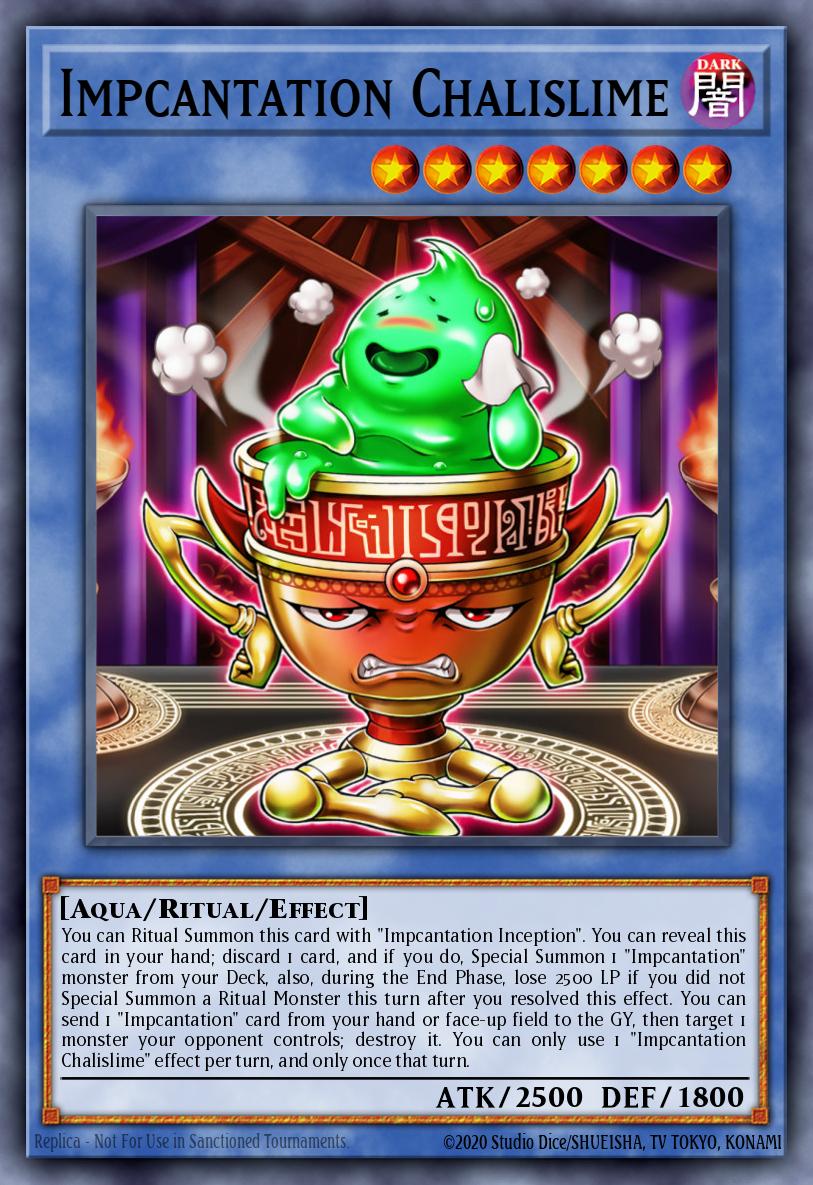

In the midst of Master Rule 4 (remember that?), Konami suddenly released revolutionary Ritual support in the form of the Impcantations, first in Cybernetic Horizon, and then in Soul Fusion and Savage Strike. The Impcantation effect monsters activated effects in hand to reveal a Ritual Spell or Monster. Then they special summoned itself and another Imp from the deck. On summon from the deck, the Imps could then search another Ritual piece from the deck or recur one from the graveyard. Their primary Ritual monster wasn't meant as much to be summoned as to use its effect to summon any Imp from the deck. And their Ritual Spell could summon any Ritual, as long as it used Imp monsters' levels. It could even recur itself from the grave.
Let's condense that into a few key strengths of the engine:
- It has generic searches.
- They put tribute fodder on the field.
- Impcantations have an element of recursion.
Each of these facets aimed at rectifying the very weaknesses of Ritual Summoning, namely: how to gather your pieces, how to summon them, and how to follow up. It was a godsend for every Ritual deck, from the jankiest Saffira homebrew to the fallen powers of Nekroz.
However, they weren't without a few weaknesses. For each Imp to pop off, they needed a piece already in hand; without one, they were dead in the hand. What's more, they were still costly; tributed Imps couldn't replace themselves, and even Chalislime and Inception discarded. Finally, in a touch of thematic whimsy, the Imps barred any Extra Deck summons while on the field.
To condense, they:
- Bricked by themselves.
- Were still costly.
- Didn't work with the Extra Deck.
Those About to Rock: Megalith

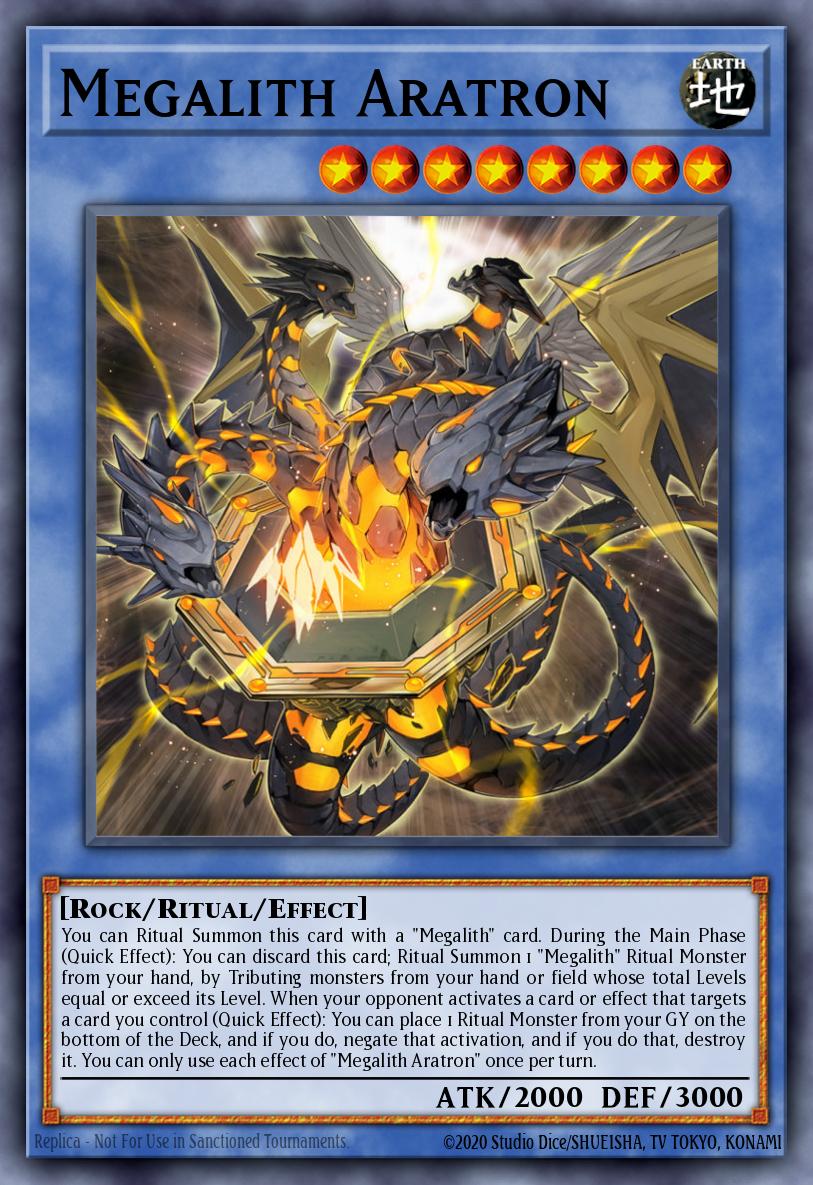

Starting in Ignition Assault, Konami released yet another Ritual archetype called Megalith. Unlike Impcantation, which was mostly Effect monsters, Megalith was entirely composed of Ritual monsters. They were unique in that they were able to Ritual Summon themselves, without a Ritual Spell, using their own effects. The Ritual Spell they did use was also unique, summoning Rituals from the deck. On their own, they were a nifty gimmick; however, astute duelists found ways to supplement them with other engines. Block Dragon, which fueled so much advantage in Adamancipator, also worked wonders in Megalith, comprised of Rock monsters. And the Synchro package, with cards like Crystron Halqifibrax, Martial Metal Marcher, and Herald of the Arc Light, raised the deck's ceiling and give it more powerful end boards.
Again, let's summarize the strengths that Megalith brought to the table:
- Innovated new ways to Ritual Summon.
- Tapped into a larger type synergy.
- Made use of the Extra Deck.
But once again, this strategy wasn't without its shortcomings. Block Dragon gave a lot to the deck, but at that point, why play a Rock combo deck with Block Dragon when Adamancipator was way better? And without Block Dragon, all the old Ritual weaknesses reared their heads again. Similarly, why play a Halqifibrax engine when you could just play Combo Eldlich? It's an old path that many players will prepare for - and will get hit by the banlist too (goodbye Linkross).
In short,
- It was just an inferior version of better decks.
- It crumbled without those outside shared engines.
Or to put it even simpler: despite having their own engine, Megaliths didn't really have a unique identity.
The Final Frontier: Drytron
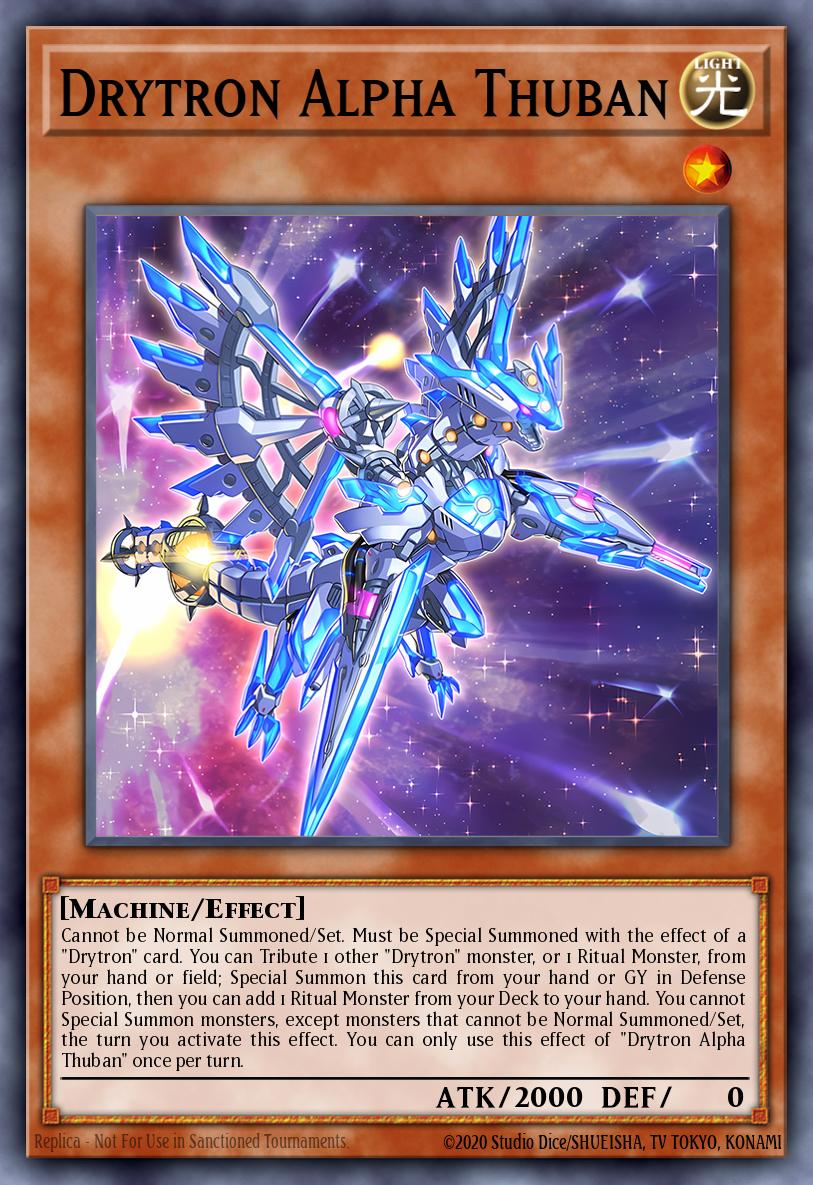
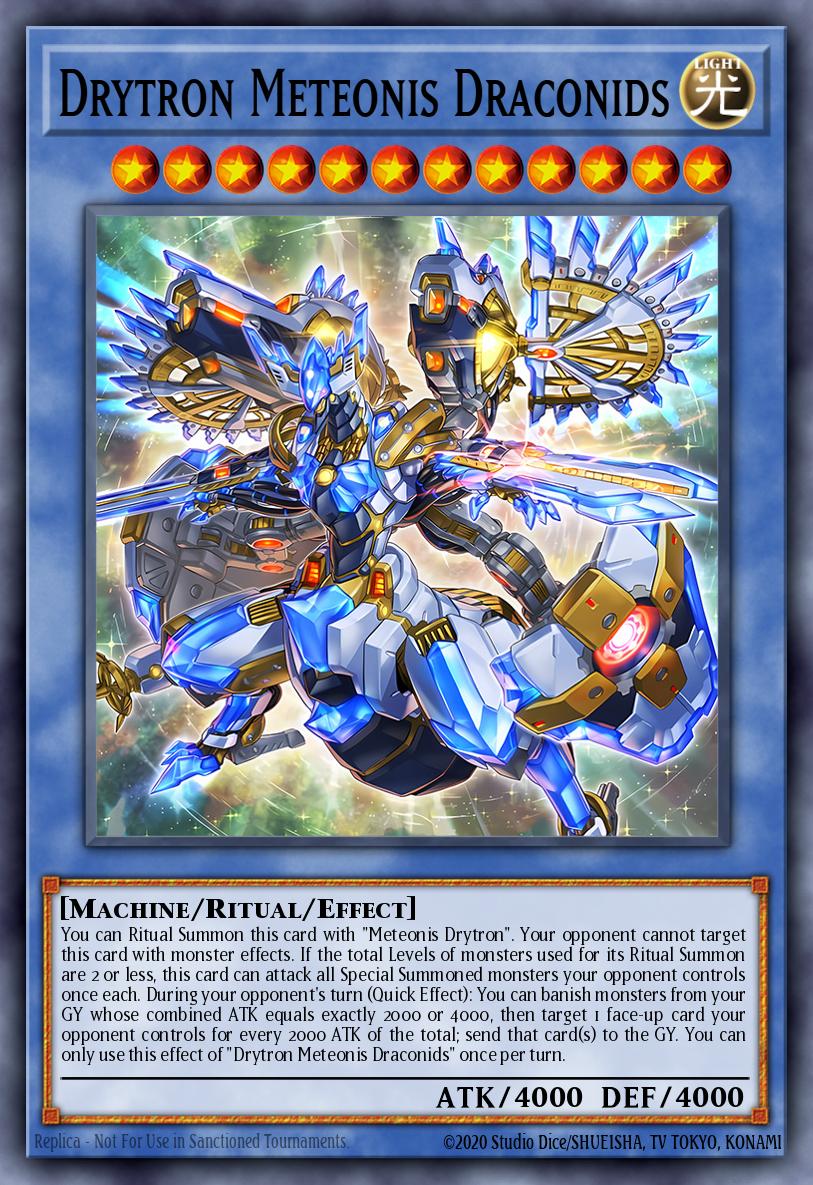
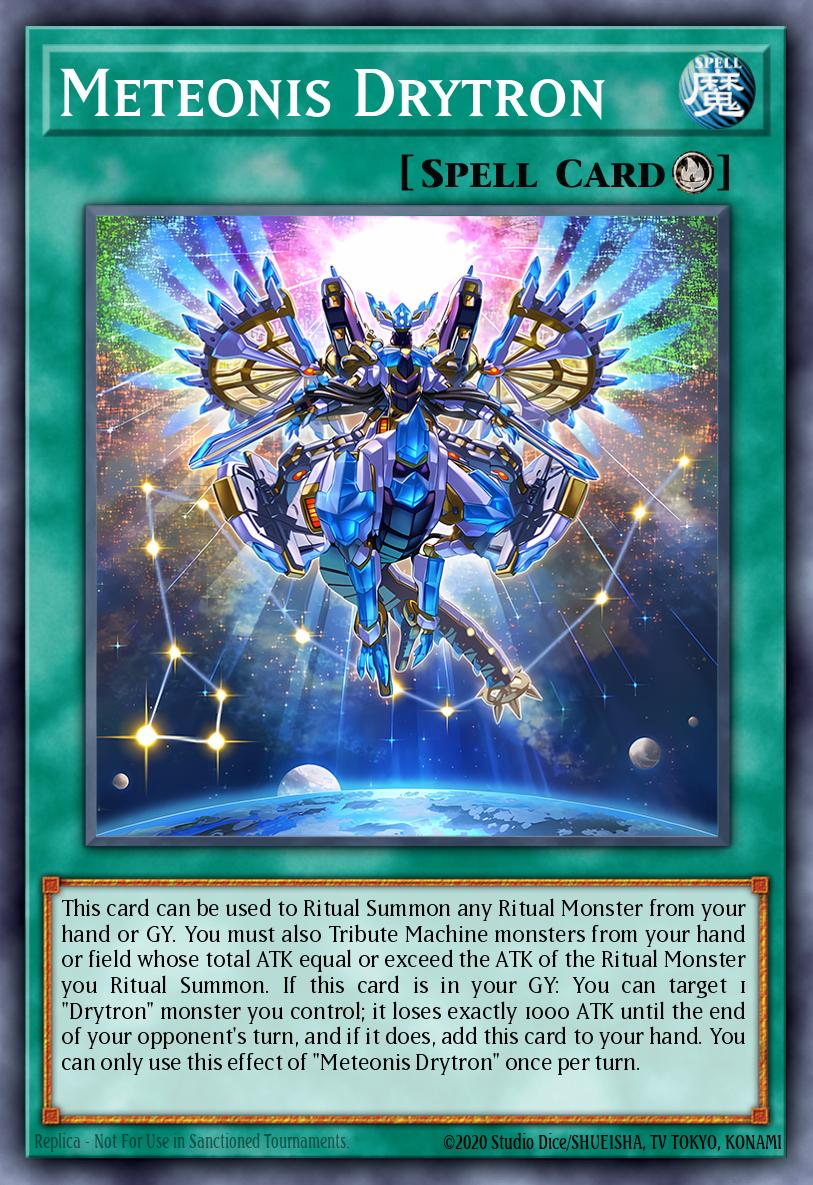
Now, let's review the strengths of Impcantation and Megalith, and see how Drytron continued those paths:
- Generic searches - Alpha and Zeta retained the Imps' ability to search any Ritual Monster or Spell, streamlining consistency.
- Tribute fodder - By staying on the field, and with Gamma bringing a Drytron back, the archetype makes sure that the Rituals always have fodder.
- Recursion - All of the Drytrons can activate their effects from the graveyard, including the aforementioned Gamma reviving its brethren. Even Meteonis Drytron recurs itself, just as Inception did.
- New Ritual Summons - By tributing for ATK instead of levels, Drytron reduces the cost of summoning, and extends the honor of fodder to monsters without levels, like Xyz and Links.
- Type synergy - While not the same type, Drytron uses a Light Fairy package to amplify its abilities, starting from Cyber Angel Benten and ending in anything from Vanity's Ruler to Artifact Lancea.
- Extra Deck - With no Imp-like restrictions, Drytron could access key Extra Deck tools, particularly Union Carrier.
Now let's see the weaknesses of the previous two decks and see how Drytron rectified them:
- Bricking - Drytron don't need a Ritual piece to search; they can search by themselves.
- Cost - Again, with even more recursion and new Ritual techniques, Drytron cuts down on the cost and recycles its resources.
- Extra Deck - See the above section.
- In others' shadow - Drytron's engine has some techs, but it feels purely "Ritual." Its primary engine is Ritual monsters and support. The endboard is its own monster, and other Ritual deck staples. No other deck turboes Vanity's Ruler, or at least not like Drytron does.
- Hot-seat cards - None of Drytron's power cards are techs are old enemies like Block Dragon or Linkross. Indeed, the deck adds to the hate canon, by putting cards like Benten and Union Carrier under greater scrutiny.
Conclusion
I have long heralded the Ritual Revolution, partly in earnest, partly as a joke. To be honest, I don't know when I expected Rituals to be really meta again, but I didn't expect it to be now. I'm not complaining, though; it's so good to see a Ritual deck competing at the highest level of Yugioh. When Konami started experimenting with Ritual support, I was cautiously hopeful. Even as I saw their shortcomings, the progress they made was undeniable. And it seems that in Drytron, their design has finally come to fruition.
Two questions remain now. First: how long will Drytron's prominence last? Perhaps the meta will adapt to counter it. Perhaps Konami will ban a key card like Benten (Please, Konami, anyone but Benten). And second: is this a sign of more great Ritual decks to come? Perhaps, like its predecessors, Drytron will pave the way for more new Ritual archetypes to compete in the meta. Or perhaps, like the ice warriors of old, it will stand alone, an anomaly of its era. At the close of a year of darkness, a lone mountain of light blue suddenly emerges - only, perhaps, to disappear just as quickly.




